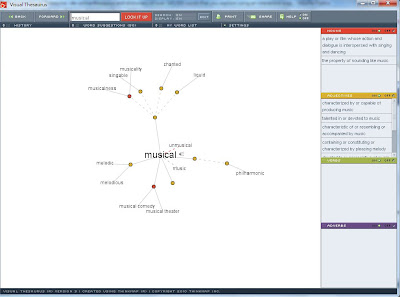Today's Website~
● LoudLit- Literature for Your Eyes and Ears
● LoudLit provides literature work with audio, including novels, poetry, short stories,
historical text.
anytime, anywhere.
Why is the content good for language learning?
● The masterpiece helps readers to appreciate the structure and artistic expression
of written world, and the listening of the literature involves the reader in the writers'
imaginative world.
● If it is for beginners, I would introduce one of the children's stories, and ask them
some questions about the stories, e.g. Who is the main character? What does the main
character do? And write down the main ideas on the blackboard.
● Have the students work in group and name some words that might be used in the story.
● Have students read the story first (without listening), and encourage them to write down
some words they don't recognize, which affect the understanding of the story.
● Encourage students to write down the words they don't know how to pronounce.
● The teacher then explain some words and have students listen and read the stories
at their own pace (They can rewind, replay according to their need). The teacher
can walk around and check if students need help.
● Encourage students to write down the sentences they like.
● The teacher could have students in group to write 3-5 sentences to summarize
the story or change the outcome of the story.
● The teacher could also ask the students to read the story (or role play).
● If it is for higher level students, the teacher could choose certain chapter to have students
read and listen in class, and then ask them some questions about the work (it depends
on what aspects the teacher would like students to learn).
Limitations~
● LoudLit- Literature for Your Eyes and Ears
● LoudLit provides literature work with audio, including novels, poetry, short stories,
historical text.
● The masterpiece is presented on the screen and the readers can click on "Read
and Listen" to start their imaginative world.
● The audio can be downloaded into your MP3 player. And you can listen to audio book
anytime, anywhere.
Why is the content good for language learning?
● The masterpiece helps readers to appreciate the structure and artistic expression
of written world, and the listening of the literature involves the reader in the writers'
imaginative world.
● Reading with eyes and ears helps learners link the words and sounds, and it also
engages the readers in the writers' world.
engages the readers in the writers' world.
● Learners can learn spelling, punctuation, and the structure of the written work by reading,
and at the same time, they can learn pronunciation, intonation when written work is
presented by the audio form.
● The masterpiece is the best tutor for English learning, especially for advanced learners,
to learn the writing styles.
and at the same time, they can learn pronunciation, intonation when written work is
presented by the audio form.
● The masterpiece is the best tutor for English learning, especially for advanced learners,
to learn the writing styles.
● Children's stories are suitable for beginners to imitate the sentence patterns and the
structure of the stories.
● Learners can choose which chapter they would like to listen, read and review again
and again.
● Reading good writing works (input) helps learners create good writing works (output)
structure of the stories.
● Learners can choose which chapter they would like to listen, read and review again
and again.
● Reading good writing works (input) helps learners create good writing works (output)
How might you use it in a language teaching context?
● If it is for beginners, I would introduce one of the children's stories, and ask them
some questions about the stories, e.g. Who is the main character? What does the main
character do? And write down the main ideas on the blackboard.
● Have the students work in group and name some words that might be used in the story.
● Have students read the story first (without listening), and encourage them to write down
some words they don't recognize, which affect the understanding of the story.
● Encourage students to write down the words they don't know how to pronounce.
● The teacher then explain some words and have students listen and read the stories
at their own pace (They can rewind, replay according to their need). The teacher
can walk around and check if students need help.
● Encourage students to write down the sentences they like.
● The teacher could have students in group to write 3-5 sentences to summarize
the story or change the outcome of the story.
● The teacher could also ask the students to read the story (or role play).
● If it is for higher level students, the teacher could choose certain chapter to have students
read and listen in class, and then ask them some questions about the work (it depends
on what aspects the teacher would like students to learn).
Limitations~
● Reading on the screen might not be good for eyes.
● Students could not underline the words they don't know.
● It takes a lot of time to do reading and listening in class.
● The quality of some readings is not good. ● Students could not underline the words they don't know.
● It takes a lot of time to do reading and listening in class.
● Could be included some more good pieces of work, including good children's stories.
----------------------------------------------------------------------------------------------------------------------------------
Example~
● Choose one piece of work you would like your students to listen and read.
● Choose one piece of work you would like your students to listen and read.
● You can listen and read online or download the MP3 file.
● You can choose the chapter and the page, or you could choose to read without audio.
You could also rewind or replay.
● Right-click and download the MP3 file.
























